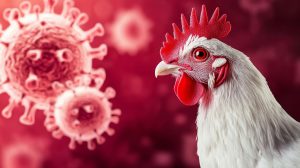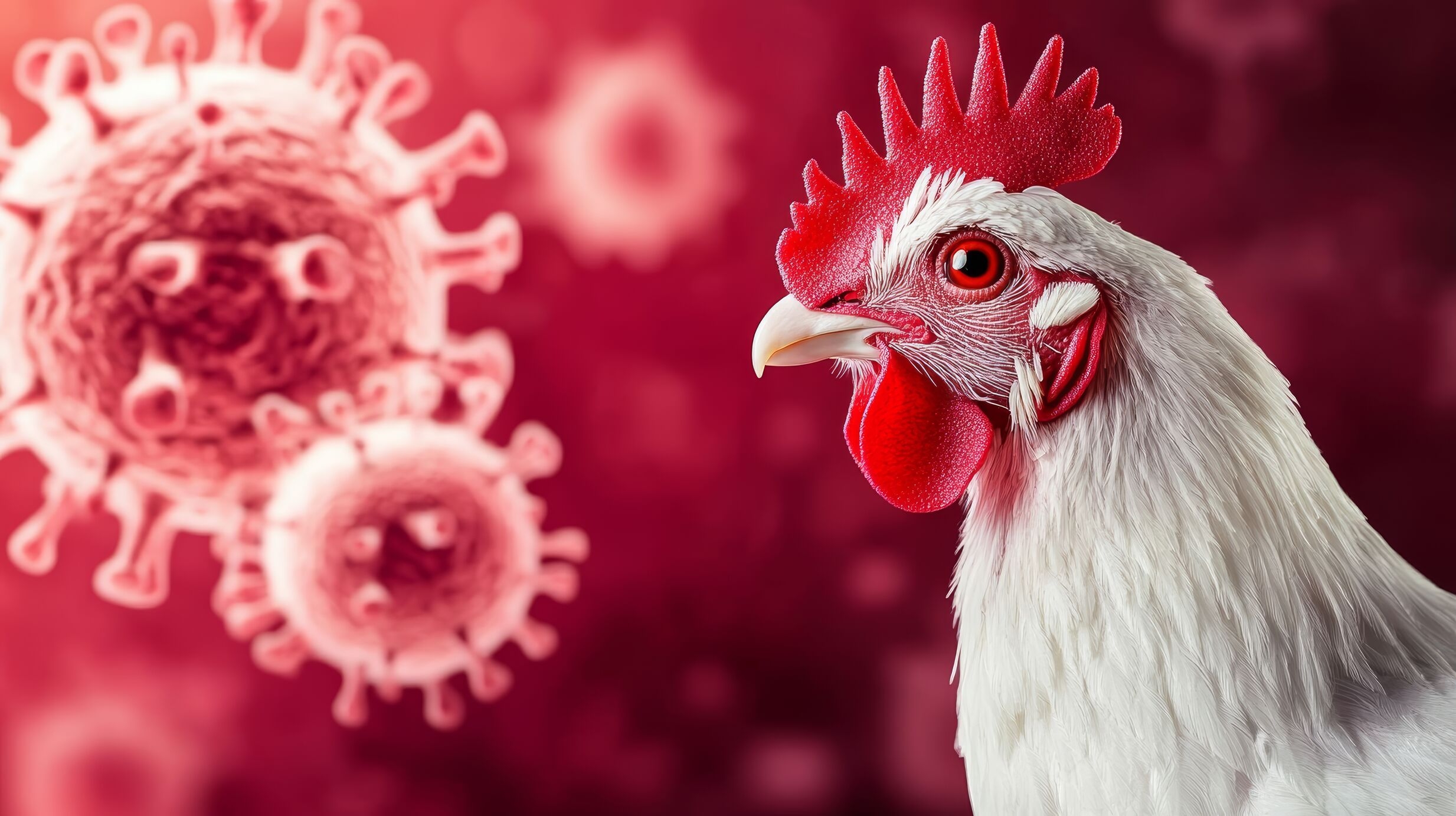Poultry
Mycoplasma in Poultry: Symptoms, Treatment, Prevention (Know It All)

Have you ever seen an entire flock of birds suffering from sneezing, coughing, and discharging nasal mucus, conjunctivitis with a sudden drop in egg production, or a poor growth rate? The chances are your flocks are infected with mycoplasma in poultry.
What is mycoplasma in poultry?
Mycoplasma in poultry is a disease caused by bacteria lacking cell walls that affects the respiratory and joint systems, leading to reduced productivity and significant economic losses.
Early detection is a challenge, as symptoms often appear late in the infection cycle.
Vaccines offer limited protection, leaving flocks vulnerable to mycoplasmosis.
To mitigate risk, a comprehensive approach is essential. From implementing strict biosecurity protocols to routine monitoring and targeted health interventions, managing mycoplasma in poultry requires ongoing attention and collaboration across the supply chain.
In today’s environment, prevention isn’t optional for mycoplasma in poultry—it’s a business imperative.
There are more than 17 species of Mycoplasma. Among them, the four main pathogenic species of Mycoplasma are:
- Mycoplasma gallisepticum (MG)
- Mycoplasma synoviae (MS)
- Mycoplasma meleagridis (MM)
- Mycoplasma iowae (MI)
In this blog, we will specifically focus on the highly prevalent mycoplasma gallisepticum in poultry and mycoplasma synoviae in poultry, causing chronic respiratory diseases in poultry.
How does mycoplasma disease in poultry spread?
Mycoplasma in poultry spreads easily through bird-to-bird contact, especially via nasal discharge. The risk increases when birds of different age groups are housed together.
Infected eggs, contaminated equipment, clothing, and even wind can carry the bacteria. Wild birds can also introduce the infection to your flocks.
While mycoplasma doesn’t infect humans, it can still hitch a ride on your flocks—through shoes, clothing, skin, or hair—and infect them. Even without direct contact, you’re a potential carrier.
Did you know?
Mycoplasma can survive:
- Up to 1 day in your nose
- 2 days on equipment, gloves, rubber, straw, or cotton
- Up to 3 days in your hair
Is Mycoplasma in chickens contagious to humans?
Don’t worry! Mycoplasma cannot infect or make you sick, but it can silently infect your flock. And since Mycoplasma in poultry spreads slowly, by the time symptoms appear, it may have already spread across the entire lot like a wildfire.
Signs and mycoplasma symptoms in poultry
We’ve categorized the symptoms of mycoplasma in poultry into two types—those linked to mycoplasma gallisepticum in poultry and mycoplasma synoviae in poultry as each presents distinct clinical signs.
Mycoplasma Gallisepticum in Poultry – Symptoms
Also known as Chronic Respiratory Disease (CRD), mycoplasma gallisepticum in poultry mainly affects the respiratory tract and shows the following signs:
- Sneezing, coughing, and tracheal rales (rattling)
- Nasal discharge and runny nose (coryza)
- Open-mouth breathing or gasping
- Decreased egg production and reduced hatchability
- Swollen eyelids, foamy eyes, and mild conjunctivitis
- Facial swelling or puffiness, especially around eyes and sinuses
- Airsacculitis with fibrinous or caseous exudate in air sacs
- Conjunctivitis and facial skin edema in turkeys
- Unilateral or bilateral swelling of periorbital sinuses (in turkeys)
- Disease worsens during cold, humid seasons or when dust/ammonia levels are high
- Carcass downgrading due to chronic infections
- May persist up to 18 months in layers if untreated
- Triggered or worsened by stress, poor ventilation, or co-infections (e.g., E. coli, IB, ND, P. multocida)
Mycoplasma Synoviae in Poultry – Symptoms
Often systemic or arthritic in nature, mycoplasma synoviae in poultry presents the following clinical signs:
- Lameness or reluctance to walk
- Swollen joints (tibiotarsal, hock, or foot joints)
- Joint blisters and serofibrinous fluid accumulation
- Pale or discolored comb and blotchy skin
- Ruffled feathers and poor feather condition
- Retarded growth, especially in broilers
- Lying down frequently due to pain
- Reduced feed intake, weight loss,lethargy, and fewer eggs
- Enlarged liver, spleen, or kidneys (in some birds)
- Symptoms worsen in cold, damp conditions or with wet litter
- Can be transmitted vertically (via infected eggs) and horizontally (via air)
Control and Prevention of mycoplasma in poultry
- The best way to control mycoplasma in poultry is to stop the infection at the source. This usually starts with clean breeding flocks. Hatching eggs should be treated.
- Their chicks must be tested to ensure they are free from infection. If both the parent birds and the eggs test clean, the flock is considered uninfected.
- Breeding birds should be kept in small groups—ideally 200 to 300 birds. If one bird is infected, the entire group may have to be removed. That’s why early detection is key.
- Avoid mixing birds of different ages. It increases the chances of spreading the disease.
- Mycoplasma doesn’t survive long outside the bird. It can be killed with proper disinfection. So, keeping the environment clean really helps.
- Keep dust and ammonia levels low. Watch the weather—sudden changes can stress your birds.
- Check younger birds first when entering the flock. This helps prevent older birds from spreading anything. And most importantly, follow good hygiene and strong biosecurity every day.
How to Diagnose Mycoplasma Infections In Poultry?
Diagnosis typically starts with serological testing. Commonly used tests for mycoplasma in poultry include:
- Serum Plate Agglutination (SPA) – a quick and cost-effective screening method.
- ELISA (Enzyme-Linked Immunosorbent Assay) – widely used for its sensitivity and ability to test large numbers of samples.
- Haemagglutination Inhibition (HI) Test – often used to confirm the presence of specific mycoplasma antibodies.
For more precise and rapid detection, especially of M. gallisepticum and M. synoviae, Polymerase Chain Reaction (PCR) is a reliable molecular tool. PCR assays can detect low levels of the pathogen even before visible signs appear.
While culling seropositive birds is considered the most effective control measure, it’s often not feasible due to high costs and operational constraints.
Instead, a combination of early detection, good biosecurity, and regular monitoring is your best approach to managing mycoplasma in poultry effectively.
Mycoplasma treatment in poultry
Mycoplasma infections in poultry, such as Mycoplasma gallisepticum and Mycoplasma synoviae pose significant threats to poultry health by compromising the respiratory system, leading to chronic respiratory disease (CRD), production losses, and increased susceptibility to secondary infections. Respease® offers a phytogenic-based, multi-targeted approach to counteract these effects and act as an adjuvant mycoplasma treatment in poultry.
Respease® supports mycoplasma poultry treatment by enhancing respiratory immunity, primarily through the stimulation of bronchus-associated lymphoid tissue (BALT) and larynx-associated lymphoid tissue (LALT), which play critical roles in mucosal defense. Trials show that birds supplemented with Respease® exhibited significant increases in BALT and LALT area, indicating a stronger local immune response. The product also boosts CD8+ cell counts in the trachea—essential for cytotoxic response and viral clearance.
The anti-inflammatory properties of Respease® are pivotal in managing mycoplasma-induced damage. Phytocompounds such as glycyrrhizin inhibit the NF-κB pathway, preventing COX-2 activation and PGE2 production, both of which are central to inflammation and tissue damage in respiratory infections. Rosmarinic acid and carvone further help by reducing inflammatory cytokines and normalizing mucus secretion, easing respiratory distress and promoting better airflow.
Additionally, Respease® supports better oxygenation by acting as a bronchodilator and strong mucolytic agent.
Field trials indicate that Respease® not only reduces the incidence of CRD symptoms but also improves productivity parameters, including body weight and feed conversion ratio, along with lower mortality and morbidity rates.
By targeting both the immune and inflammatory pathways, Respease® presents a holistic, natural solution for managing respiratory challenges associated with mycoplasma in poultry.

















Add your comment